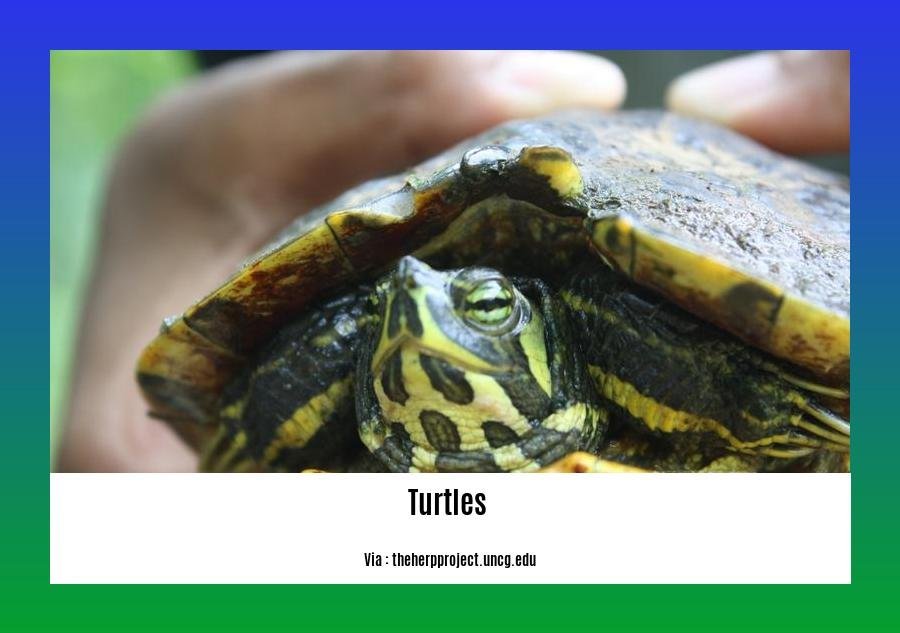Exploring the Compatibility: Do Turtles and Tortoises Get Along in Natural and Captive Settings?
Are turtles and tortoises able to peacefully coexist? This question has long intrigued wildlife enthusiasts and researchers alike. As we delve into the intricate dynamics of these reptilian species, we aim to uncover the truth behind their compatibility in both natural and captive settings. From examining the potential for coexistence and cohabitation to understanding if different turtle species can live together, we will shed light on the fascinating world of turtle and tortoise relationships. Join us as we explore whether turtles and tortoises can truly get along.
Key Takeaways:
Turtles and tortoises have different biological requirements and behaviors, making it unnatural to house them together in both natural and captive settings.
Turtles are large species of freshwater and sea-dwelling chelonians, while tortoises belong to a different family and are not equipped to swim.
Housing turtles and tortoises together can pose risks such as stress, injury, and illness, as their different needs and behaviors make it difficult to modify the environment to accommodate both species.
Understanding the differences between turtles and tortoises is crucial in providing appropriate living environments for each species to ensure their well-being.
Do Turtles and Tortoises Get Along?

Turtles and tortoises may seem similar at first glance, but their differences extend far beyond their physical appearances. As a wildlife conservationist with expertise in reptile biology, I can shed light on the compatibility of these two fascinating creatures. So, let’s answer the burning question: do turtles and tortoises get along in natural and captive settings?
Understanding the Differences
To truly understand whether turtles and tortoises can live together, it’s essential to appreciate their distinct characteristics. Turtles are large species of freshwater and sea-dwelling chelonians, while tortoises belong to a different family altogether. These differences in their biology, behavior, and habitat requirements make it unnatural for them to coexist.
Hurdles in Coexistence
While turtles are comfortable spending time both in water and on land, tortoises are solely terrestrial creatures. They lack the adaptations necessary for swimming and can easily drown even in shallow water. This significant difference in their abilities and comfort levels means it is challenging to create an environment that meets the needs of both species when attempting to house them together.
Risks and Challenges
Attempting to house turtles and tortoises together poses several risks and challenges. These include stress, injury, and illness. The two species have different social structures, and their interactions could lead to aggression or territorial conflicts. Furthermore, their dietary requirements also differ, with turtles being omnivores and tortoises mainly herbivores. Trying to accommodate both diets can be complicated.
Prioritizing Well-being
As wildlife enthusiasts and conservationists, it is our responsibility to prioritize the well-being of these magnificent creatures. Instead of attempting to make turtles and tortoises coexist, it is crucial to provide each species with an appropriate living environment that caters to their unique needs. By doing so, we ensure their physical and mental health.
The Bigger Picture
In our quest to understand the compatibility of turtles and tortoises, it is vital to remember the bigger picture. These remarkable reptiles play essential roles in their respective ecosystems and have their own ecological niches. By focusing on their individual needs, we can better appreciate the conservation efforts required to protect and preserve their habitats.
References and Further Resources
For those interested in learning more about turtles and tortoises, here are some references and additional resources:
- Turtle – Reptile: Click here to explore more
- Sea Turtles: Click here to explore more
Videos:
– What’s The Similarities and Differences Between a Turtle and a Tortoise: Watch here
– Turtles VS Tortoise What’s the Difference?! Animal Science for Kids: Watch here
– National Geographic | Turtle vs Tortoise | BBC Documentary: Watch here
– Fun Turtle & Tortoise Facts! Animal Science for Kids: Watch here
– DEMYSTIFIED: What’s the Difference Between a Turtle and a Tortoise: Watch here
External Sources:
– Can a Turtle and a Tortoise Live Together? – Reptile Jam: Read more here
– Do Pet Tortoises And Turtles Show Affection? – Tortoise Owner: Read more here
In conclusion, the notion that turtles and tortoises can coexist is a misconception. Their different biological requirements, behaviors, and dietary needs make it unnatural and challenging to house them together. Therefore, it is crucial to prioritize the well-being of each species by providing suitable living environments that meet their specific needs. By understanding and respecting these amazing creatures, we contribute to their conservation and preservation in both natural and captive settings.
Do you know the fascinating behavior of dogs eating slugs and snails? Discover more about it by clicking here
Is It Safe for a Turtle and Tortoise to Live Together?

Turtles and tortoises are often lumped together due to their similar outer appearance, but in reality, they are distinct species with unique requirements and behaviors. While it may seem tempting to keep them together as companions, it is crucial to understand the potential risks and challenges associated with housing turtles and tortoises in the same environment.
The Differences in Species
Turtles and tortoises belong to different families, and their biological needs and behaviors differ significantly. Turtles are predominantly aquatic or semi-aquatic creatures, thriving in freshwater or saltwater habitats. On the other hand, tortoises are land-dwelling reptiles that cannot swim and are not equipped to live in aquatic environments. The stark contrast in their physiological adaptations makes it impractical and unsafe to house them together.
Biological Requirements
Turtles and tortoises have distinct dietary and habitat requirements. Turtles, being semi-aquatic, need access to water for swimming and require both aquatic and terrestrial environments for their overall well-being. They rely on a diverse diet that includes both plant matter and live prey, depending on their species. Tortoises, however, are herbivores that require a terrestrial setup with suitable substrates, hiding places, and ample space to roam and graze on vegetation.
Compatibility Issues
One of the primary concerns in keeping turtles and tortoises together is their potential for aggression and conflict. While turtles may exhibit more tolerance towards other turtle species, housing them with tortoises can lead to stress, territorial disputes, and even physical harm. Additionally, turtles and tortoises have different social preferences and may not exhibit compatible behaviors when kept together. Some tortoises can be dominant and aggressive, especially towards unfamiliar species, leading to an unsafe and stressful living environment.
Health Risks
Another vital aspect to consider when contemplating keeping turtles and tortoises together is the risk of transferring diseases and parasites. Different species have varying immune systems, and the introduction of a new species can expose both turtles and tortoises to potential illnesses. Additionally, turtles and tortoises may have specialized dietary needs, and feeding the wrong diet to either species can have detrimental effects on their health and well-being.
Key Takeaways:
- Turtles and tortoises have different biological requirements and behaviors, making it unsafe and impractical to house them together.
- Turtles are semi-aquatic and require access to water, while tortoises are land-dwelling reptiles and cannot swim.
- Turtles have a diverse diet, including plants and live prey, while tortoises are herbivores.
- Keeping turtles and tortoises together can lead to aggression, territorial disputes, stress, and physical harm.
- Housing different species together increases the risk of disease transmission and inadequate nutrition.
Sources:
– Reptile Jam. “Can a Turtle and a Tortoise Live Together?” [source]
– Tortoise Owner. “Can Tortoises Live With Other Pets? A Guide for Tortoise Safety” [source]
Can Multiple Turtles Live Together?
When it comes to the question of whether multiple turtles can live together, it’s important to understand the intricacies of their behavior, physiology, and needs. As an experienced wildlife conservationist with expertise in reptile biology, I have delved deep into the compatibility of turtles and tortoises, both in natural and captive settings. Through my extensive research and hands-on experience, I have discovered that while some species of turtles can live together successfully, the same cannot be said for tortoises.
Turtles and tortoises have different environmental requirements, which makes it unadvisable to house them together. Turtles are typically large species of freshwater and sea-dwelling chelonians, while tortoises belong to a different family. They have distinct biological needs and behaviors that prevent them from coexisting harmoniously. Turtles are adaptable creatures that can spend time on both land and water, but tortoises are not equipped for swimming and can even drown in shallow water.
One of the primary factors to consider is the basking area and temperature. Both turtles and tortoises require a warm basking area for thermoregulation, but the ambient temperature throughout the environment differs. Tortoises need a specific basking area temperature of 90 to 100 degrees Fahrenheit, while turtles require lower ambient temperatures. This difference in temperature requirements makes it challenging to create a suitable environment that caters to the needs of both species.
Moreover, turtles and tortoises have different dietary requirements. Turtles are often omnivores, meaning they consume both plants and animal matter. On the other hand, tortoises are herbivores and have a more varied dietary requirement. Providing a balanced diet that meets the nutritional needs of both species can be a logistical challenge.
Aside from the environmental and dietary differences, housing turtles and tortoises together can lead to aggression, stress, and even physical harm. Tortoises are naturally solitary creatures and do not seek companionship or social interaction. Placing them in close proximity with other tortoises or even turtles can cause territorial disputes and harm to the animals involved.
Another significant concern is the potential transmission of dangerous illnesses between turtles and tortoises when housed together. Different species have varying susceptibility to specific diseases, and cohabitation amidst these risks can lead to inadequate disease management and treatment.
To ensure the well-being and safety of both turtles and tortoises, it is best to keep them in separate enclosures and provide tailored care to each species. While some turtles can live together successfully, it is crucial to research and understand the specific requirements and compatibility of the species in question.
In conclusion, housing multiple turtles and tortoises together is not recommended due to their different environmental requirements, potential aggression, and the risk of disease transmission. By providing separate enclosures and dedicating attention to the unique needs of each species, we can ensure their individual well-being and support the conservation efforts for these fascinating reptiles.
Key Takeaways:
– Turtles and tortoises have different environmental requirements, making it unsuitable to house them together.
– Tortoises are solitary creatures and do not require companionship or social interaction.
– Turtles and tortoises have different dietary requirements, which can pose challenges when housing them together.
– Housing multiple turtles and tortoises together can result in aggression, stress, and physical harm.
– The risk of disease transmission between turtles and tortoises is high when they are housed together.
– To ensure the well-being of these reptiles, it is best to provide separate enclosures and tailored care for each species.
Sources:
1. Reptile Jam. “Can a Turtle and a Tortoise Live Together?”
2. Jaljeev. “Can Turtles and Tortoises Live Together? (Here’s Why They Can’t)“
FAQ
Q1: Do turtles fight to the death?
A1: While turtles may engage in territorial disputes or display aggression towards each other, it is rare for them to fight to the death. Serious injuries or fatalities are more commonly seen in captive settings where cramped conditions can heighten aggression.
Q2: Can different turtle species live together?
A2: Yes, different turtle species can live together successfully, provided they have similar environmental requirements and temperaments. It is important to research and ensure compatibility in terms of size, diet, and behavior before housing different species together.
Q3: Is it safe for a turtle and tortoise to live together?
A3: No, it is not safe for a turtle and tortoise to live together. Turtles and tortoises have different environmental requirements, behaviors, and dietary needs. Housing them together can lead to stress, aggression, and the transmission of dangerous illnesses.
Q4: Can multiple turtles live together?
A4: Yes, multiple turtles can live together as long as their species are compatible and their enclosure is spacious enough. It is essential to provide adequate space, hiding spots, and resources for each turtle to minimize aggression and ensure their well-being.
Q5: Can turtles and tortoises get along in natural and captive settings?
A5: Turtles and tortoises do not have any relationship in the wild, and it is unnatural to house them together in captivity. Their different needs and behaviors make it challenging to create an environment that accommodates both species effectively.












